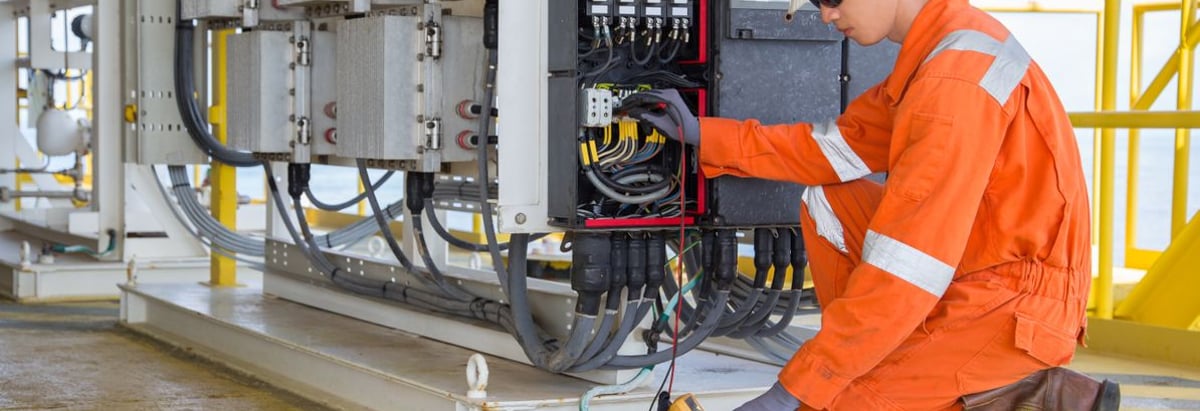- Hong Kong
- /
- Electrical
- /
- SEHK:1133
These 4 Measures Indicate That Harbin Electric (HKG:1133) Is Using Debt Extensively

David Iben put it well when he said, 'Volatility is not a risk we care about. What we care about is avoiding the permanent loss of capital.' So it seems the smart money knows that debt - which is usually involved in bankruptcies - is a very important factor, when you assess how risky a company is. We can see that Harbin Electric Company Limited (HKG:1133) does use debt in its business. But should shareholders be worried about its use of debt?
Why Does Debt Bring Risk?
Debt and other liabilities become risky for a business when it cannot easily fulfill those obligations, either with free cash flow or by raising capital at an attractive price. Ultimately, if the company can't fulfill its legal obligations to repay debt, shareholders could walk away with nothing. While that is not too common, we often do see indebted companies permanently diluting shareholders because lenders force them to raise capital at a distressed price. Of course, the upside of debt is that it often represents cheap capital, especially when it replaces dilution in a company with the ability to reinvest at high rates of return. The first thing to do when considering how much debt a business uses is to look at its cash and debt together.
See our latest analysis for Harbin Electric
How Much Debt Does Harbin Electric Carry?
The image below, which you can click on for greater detail, shows that Harbin Electric had debt of CN¥6.11b at the end of December 2023, a reduction from CN¥7.58b over a year. However, it does have CN¥21.6b in cash offsetting this, leading to net cash of CN¥15.5b.

How Healthy Is Harbin Electric's Balance Sheet?
Zooming in on the latest balance sheet data, we can see that Harbin Electric had liabilities of CN¥52.9b due within 12 months and liabilities of CN¥3.84b due beyond that. Offsetting this, it had CN¥21.6b in cash and CN¥17.8b in receivables that were due within 12 months. So its liabilities total CN¥17.3b more than the combination of its cash and short-term receivables.
This deficit casts a shadow over the CN¥5.57b company, like a colossus towering over mere mortals. So we'd watch its balance sheet closely, without a doubt. After all, Harbin Electric would likely require a major re-capitalisation if it had to pay its creditors today. Given that Harbin Electric has more cash than debt, we're pretty confident it can handle its debt, despite the fact that it has a lot of liabilities in total.
It was also good to see that despite losing money on the EBIT line last year, Harbin Electric turned things around in the last 12 months, delivering and EBIT of CN¥252m. When analysing debt levels, the balance sheet is the obvious place to start. But it is future earnings, more than anything, that will determine Harbin Electric's ability to maintain a healthy balance sheet going forward. So if you want to see what the professionals think, you might find this free report on analyst profit forecasts to be interesting.
Finally, a business needs free cash flow to pay off debt; accounting profits just don't cut it. Harbin Electric may have net cash on the balance sheet, but it is still interesting to look at how well the business converts its earnings before interest and tax (EBIT) to free cash flow, because that will influence both its need for, and its capacity to manage debt. Happily for any shareholders, Harbin Electric actually produced more free cash flow than EBIT over the last year. There's nothing better than incoming cash when it comes to staying in your lenders' good graces.
Summing Up
While Harbin Electric does have more liabilities than liquid assets, it also has net cash of CN¥15.5b. And it impressed us with free cash flow of CN¥1.2b, being 474% of its EBIT. So while Harbin Electric does not have a great balance sheet, it's certainly not too bad. When analysing debt levels, the balance sheet is the obvious place to start. However, not all investment risk resides within the balance sheet - far from it. To that end, you should be aware of the 2 warning signs we've spotted with Harbin Electric .
At the end of the day, it's often better to focus on companies that are free from net debt. You can access our special list of such companies (all with a track record of profit growth). It's free.
Valuation is complex, but we're here to simplify it.
Discover if Harbin Electric might be undervalued or overvalued with our detailed analysis, featuring fair value estimates, potential risks, dividends, insider trades, and its financial condition.
Access Free AnalysisHave feedback on this article? Concerned about the content? Get in touch with us directly. Alternatively, email editorial-team (at) simplywallst.com.
This article by Simply Wall St is general in nature. We provide commentary based on historical data and analyst forecasts only using an unbiased methodology and our articles are not intended to be financial advice. It does not constitute a recommendation to buy or sell any stock, and does not take account of your objectives, or your financial situation. We aim to bring you long-term focused analysis driven by fundamental data. Note that our analysis may not factor in the latest price-sensitive company announcements or qualitative material. Simply Wall St has no position in any stocks mentioned.
About SEHK:1133
Harbin Electric
Manufactures and sells power plant equipment in the People’s Republic of China, the rest of Asia, Africa, Europe, and the United States.
Solid track record with excellent balance sheet.
Similar Companies
Market Insights
Community Narratives



